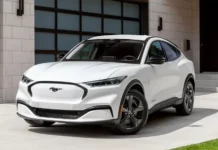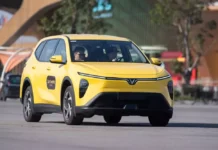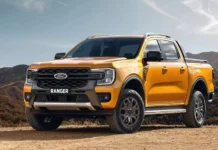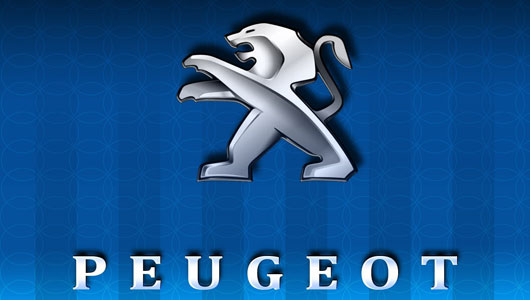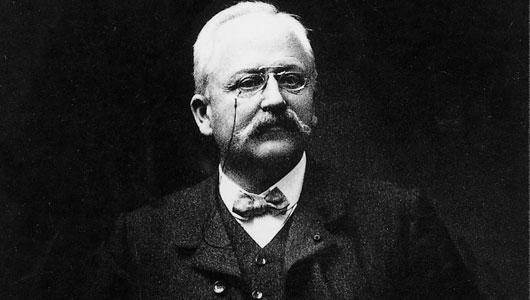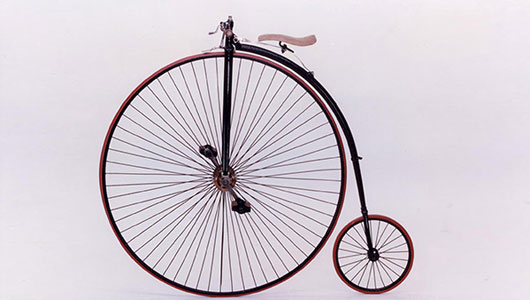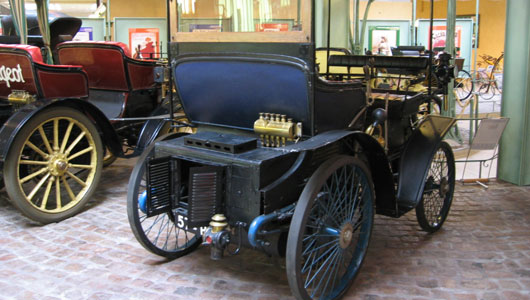Two years ago, the largest car group in France, Peugeot, celebrated its 200th birthday. 200 years might be a long and eventful journey for Peugeot, manufacturing cars, motorcycles, and bicycles.
>> THACO exclusively distributes Peugeot cars in Vietnam
>> 3 automakers granted permission to enter Vietnam in 2013
Peugeot is a famous French car brand, now a part of the PSA Peugeot Citroen Group headquartered in Paris, France. Back in the late 19th century, Peugeot started with bicycle production. It is the popular Peugeot bicycles in and outside France that paved the way for the brand to expand into car manufacturing.
The birth of Peugeot
Armand Peugeot (a graduate of the Paris electricity school) introduced a model of a bicycle with large and small wheels called the Le Grand Bi in 1882, and many other bicycle models later. The Peugeot bicycles were well-received for their beautiful and unique designs. At the same time, the Peugeot factory also developed engines and the first car models.
In 1926, the bicycle and car manufacturing factories were separated and operated independently. After meeting with Gottlieb Daimler and other speed enthusiasts, Armand was completely convinced by the feasibility of this machine, so he focused on research and design even though he did not have the support from his family.
Armand introduced the first steam-powered three-wheeler, collaborating with Léon Serpollet, at the 1889 International Exhibition. This engine received a lot of attention, however, it was really heavy and cumbersome, so Armand quickly replaced it with a gasoline engine. Then came the diesel engine. Success came to him with the support of his family.
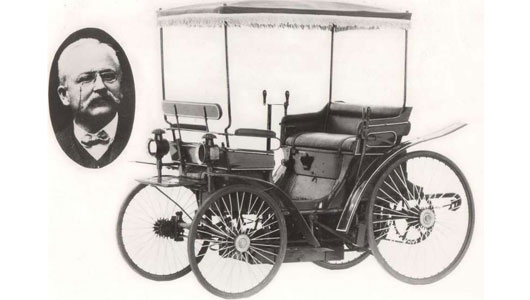 Peugeot’s history has had many ups and downs
Peugeot’s history has had many ups and downs
On the path of turning Peugeot into the most powerful industrial empire in Europe, in addition to success, there are also changes, experiments, puzzles, creativity, and choices with each direction change to make Peugeot a continuously growing industrial conglomerate through each decade.
Originating from bicycles
The Peugeot bicycle brand is the most reputable and powerful in France. Peugeot bicycles are more beautiful and durable than other brands. The first bicycle was produced in 1882 in Beaulieu – exported with the Peugeot label until the 1980s when the cargo ship to North America was banned and the right to use the Peugeot brand was sold to ProCycle in Canada. In Europe, they are still produced by the Cycleurope group in Neuilly even though the brand is no longer allowed to use it.
In addition to diamond frame bicycles, Peugeot also produces popular hybrid frame versions and bicycles with saddle and pedals for 2 or more people.
In 1882, Peugeot introduced the Grand Bi bicycle model with a large front wheel and a small rear wheel. This type of bicycle has the handlebars and pedals directly attached to the wheel axle. However, riding such unique bicycles is not simple because while riding, you cannot touch your feet on the ground, and it is even harder to balance than a unicycle with one auxiliary wheel.
In 1886, Peugeot began standardizing the production of bicycles with the same size in Beaulieu. And switched to developing engines (initially of Daimler) and manufacturing cars after meeting Gottlieb Daimler and Émile Levassor (1888). He believed in the bright future of the new car – a great invention that would change the world – after many experiments and discussions with like-minded people who understood the value of cars, he became more confident and started producing the first car model.
 The car invented by Armand Peugoet and Léon Serpollet
The car invented by Armand Peugoet and Léon Serpollet
In 1889, a historic year for the Peugeot brand with the birth of the first car named after the two inventors, Armand Peugoet and Léon Serpollet – a steam engine expert. This three-wheeler was exhibited at the 1889 Paris International Exhibition, coinciding with the 100th anniversary of the French Revolution.
Transition to gasoline engines
The first gasoline-powered model was the Type 2, a 4-wheel, 2-seater car, developed from Daimler’s engine at the Valentigney factory in 1890. The following year, Peugeot changed its company name to Les Fils de Peugeot Frères. In September, the Type 2 was driven by Mr. Rigoulet and Mr. Doriot on a 2,212 km long journey from Valentigney to Brest and then back, reaching a maximum speed of 14.5 km/h.
In 1892, Peugeot produced 29 cars using rubber tires. The Type 4 is a truly unique, one-of-a-kind car, it was purchased by the king of Tunisia. Two years later, Peugeot diversified with new car models, simultaneously producing the Type 5 (2-seater), Type 6, and Type 7 (4-wheel 2-horsepower car), then the Type 8 Victoria, Type 9, and Type 10. At the Horseless Carriage Race, Peugeot and Panhard (a French car brand at that time) shared first place.
In 1895, there were more models including the Type 11 (2-seater) and Type 12. Peugeot continued to win the Paris-Bordeaux-Paris race, driver Édouard Michelin drove the Éclair with inflatable tires. The Type 13 was only produced for 2 years.
Peugeot Automobile
Armand Peugeot established his own car company, Peugeot Automobile, in 1896 in Lille. He focused on producing passenger cars and trucks, while the production of small cars for his nephews Pierre, Robert, and Jules continued at the family company (Les Fils de Peugeot Frères).
The Type 14 appeared in the summer of 1896, the first model using the new horizontal 2-cylinder engine from Michaux. Therefore, Peugeot no longer used Daimler’s engine.
By 1897, Armand built a car manufacturing factory (with a total area of 50,000 m2) in Audincourt, Doubs. And another factory in Fives-Lille in northern France. Here, he produced models with horizontal twin-cylinder engines and improved all other models such as the Type 14, 15, 16, ultra-small Type 17, and Type 18 (8-seater). Armand’s cars at this time could all use Michelin’s inflatable tube and tire instead of the old solid tires. The following year, Armand Peugeot’s car portfolio continued to expand with the Types 21 to 25. Peugeot introduced these models at the first Paris Motor Show in July 1898.
By 1899, Peugeot’s car portfolio consisted of 15 models with capacities ranging from 2 to 12 seats and weights from 720 to 1250 kg. The most popular one was the Type 15 horse car. The 3-wheel cars were produced at the Beaulieu plant.
In 1901, the Type 36 – a 3-seater and 4-seater convertible horse carriage model with a new straight 1-cylinder engine. This was the first Peugeot car with a convertible top, marking the transition to non-chain steering. Along with the appearance of a lightweight 1.5 horsepower motorcycle model that encouraged Peugeot to produce the first 4-cylinder models of the brand. They were all on display at the Paris Exhibition.
Strong recovery after the war
During World War II, Peugeot’s factories had to produce vehicles and weapons for the German army. When the war ended, most of the infrastructure was destroyed by bombs. By 1948, the company had recovered and resumed production with the new 203 model. This marked the beginning of the era when Peugeot started collaborating with Italy’s famous automobile design company Pininfarina, the success of the models designed by Pininfarina prompted Peugeot to expand into the US market in 1958. At this time, Peugeot had collaborations with other manufacturers such as Renault (in 1966) and Volvo (in 1972).
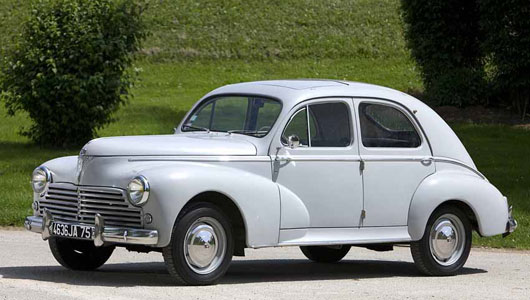 Peugeot 203 was produced again in 1948
Peugeot 203 was produced again in 1948
In 1974, Peugeot acquired a 30% stake in Citroën and later gained control within 2 years, simultaneously changing the name of the company to PSA (Peugeot Societe Anonyme). Based on this alliance, Peugeot and Citroën could share technology while maintaining independence in design.
The PSA Group continued to expand by acquiring the European branch of Chrysler in 1978. However, this deal did not bring results as the majority of the facilities and machinery of this subsidiary were old. With declining sales, Peugeot decided to stop production of the models at this subsidiary, except for the Arizona model, which was later renamed the 309.
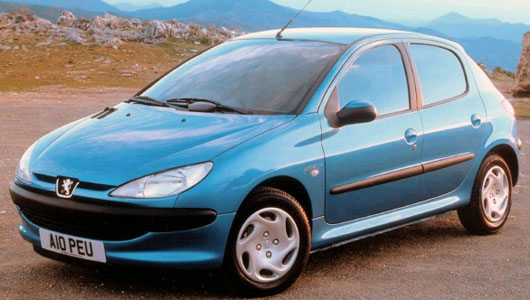 Peugeot 206 – produced from the late 1990s to after 2000
Peugeot 206 – produced from the late 1990s to after 2000
In the 1990s, Peugeot made some mistakes in general management. The current product range is aimed at a higher-end market segment. Peugeot has developed many new models alongside classic ones such as the 200, 300, 400, and 600 series.
Thao Anh (TTTĐ/Source: Consolidated)
THACO Becomes Mobility Sponsor of Ho Chi Minh City International Film Festival (HIFF) 1st Edition – 2024
THACO becomes the Official Transportation Sponsor for Ho Chi Minh City International Film Festival (HIFF) 1st Edition – 2024 by providing the entire fleet of premium vehicles, shuttling and accompanying prestigious guests and artists throughout the event. The entire fleet is provided by THACO AUTO (a member of THACO Group).





